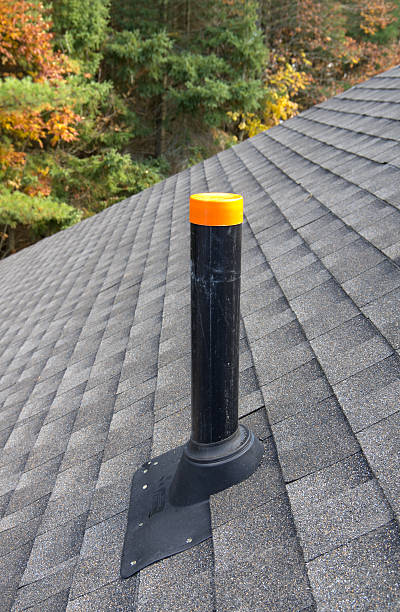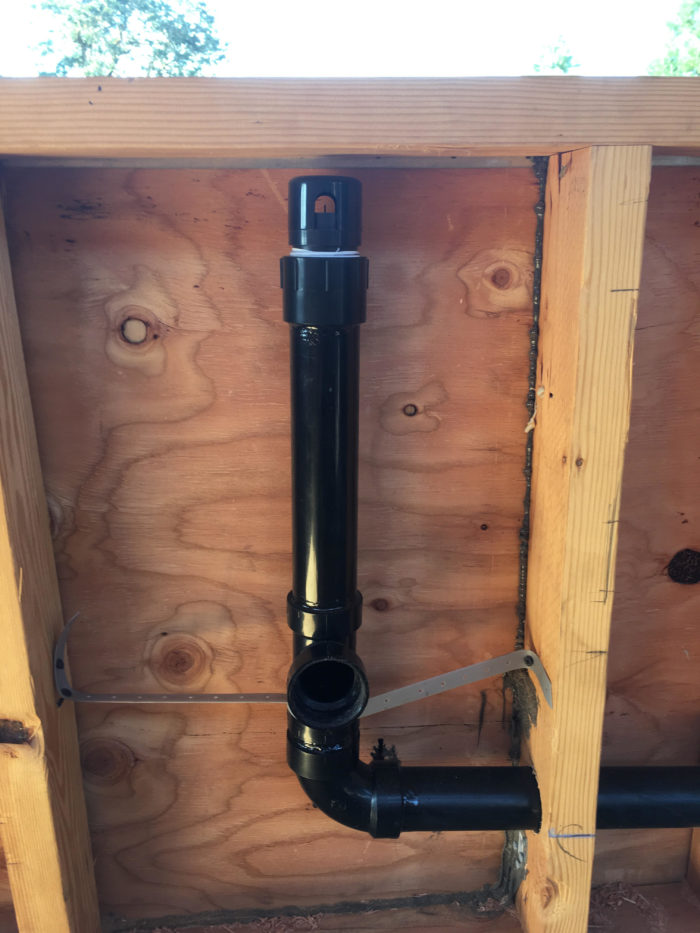The Purpose of Adequate Ventilation in Ensuring Plumbing Systems
The Purpose of Adequate Ventilation in Ensuring Plumbing Systems
Blog Article
Right here further down you'll find a good deal of exceptional help and advice in regards to What Is a Plumbing Vent and Why Is It Important.

Proper ventilation in pipes systems is often overlooked, yet it is critical for maintaining the functionality and security of your home's pipes. Air flow assists control air pressure, prevent the buildup of unsafe gases, and make sure the reliable removal of waste. In this overview, we will certainly check out the significance of proper pipes ventilation, exactly how it works, and the benefits it offers your pipes system.
Exactly How Ventilation Works in Plumbing Equipments
Atmospheric Pressure Policy
Appropriate ventilation maintains well balanced atmospheric pressure within the pipes system. When water flows through pipelines, it displaces air. Without sufficient air flow, this displacement can produce adverse stress, leading to reduce drains or siphoning of water from traps, which can trigger undesirable odors to seep into the home.
Stopping Sewer Gas Accumulation
One of the most essential functions of pipes vents is to prevent sewer gases, such as methane and hydrogen sulfide, from gathering within the home. These gases can position major health risks and are extremely flammable. Vent pipes enable these gases to escape securely outdoors.
Helping in Waste Elimination
Air flow aids in the reliable removal of wastewater by stopping airlocks in the drainage system. When air can flow freely via the vents, it allows water and waste to flow efficiently through the pipes, reducing the threat of blockages and back-ups.
Benefits of Correct Air Flow
Improved System Effectiveness
Correctly ventilated plumbing systems run more successfully, with fewer blockages, faster draining, and much less pressure on the pipelines. This efficiency prolongs the life expectancy of the plumbing system.
Improved Air High Quality
By preventing drain gases from entering your home, correct air flow adds to far better interior air top quality, making your living setting healthier and more comfortable.
Preventing Water Damage
Ample ventilation helps protect against water from being siphoned out of traps, which can result in sewer gases going into the home and causing water damage in time.
Actions to Make Certain Correct Ventilation
Consulting Pipes Codes
Constantly seek advice from neighborhood plumbing codes when making or modifying your pipes system. These codes provide the needed guidelines for appropriate airing vent and guarantee your system satisfies security criteria.
Normal Examination and Maintenance
Routine assessments can aid identify prospective air flow problems prior to they end up being major issues. Maintenance jobs, such as cleaning vent pipes and checking for obstructions, are important for keeping the system in good working order.
Specialist Setup
For brand-new setups or significant modifications, it's important to work with an expert plumbing technician. They have the competence to make sure the air flow system is properly designed and set up according to code.
Recognizing Air Flow in Pipes
Air flow in pipes describes the network of pipelines that allow air to stream through the water drainage system. These vents serve multiple purposes, including controling air pressure within the pipelines, avoiding sewage system gases from getting in the home, and helping in the smooth flow of wastewater.
Sorts Of Plumbing Vents
Key Stack Vent
The main stack air vent, also called the vent stack, is the key air vent in a pipes system. It prolongs from the primary drainpipe line up with the roof, allowing gases to leave and fresh air to get in the system.
Branch Vent
Branch vents link to the primary stack air vent and serve specific components, such as sinks, commodes, and showers. These vents make sure that each fixture has appropriate ventilation to work effectively.
Air Admission Shutoff (AAV).
An Air Admittance Valve (AAV) is a one-way valve that allows air to go into the plumbing system without the need for a typical air vent pipeline expanding through the roofing. AAVs are generally made use of in improvements or locations where mounting a common air vent is impractical.
Indications of Poor Air Flow in Pipes.
Slow Draining Fixtures.
If your sinks, bathtubs, or bathrooms are draining pipes slowly, maybe a sign of bad ventilation. Inadequate air circulation can develop a vacuum effect, making it tough for water to drain correctly.
Gurgling Appears.
Gurgling sounds coming from drains are usually an outcome of air being drawn through water traps as a result of negative stress in the pipelines. This is a clear indication of inadequate ventilation.
Unpleasant Smells.
Sewage system odors inside your home are a warning that your pipes system is not effectively aerated. This can mean that drain gases are not being adequately aired vent outside, causing possibly hazardous problems.
Typical Ventilation Errors.
Inadequate Vent Sizing.
Making use of undersized air vent pipelines can bring about poor air circulation and stress imbalances in the system. It's essential to utilize vents that meet the certain demands of your pipes system.
Improper Vent Placement.
Placing vents as well far from the components they offer can reduce their effectiveness. Appropriate positioning ensures that air can stream freely and effectively via the system.
Disregarding Code Needs.
Building ordinance give specific standards for plumbing ventilation. Neglecting these codes can lead to a system that fails to work correctly and might cause expensive fixings or health hazards.
Verdict.
Proper air flow is an important part of any plumbing system, making certain that it works successfully and securely. By recognizing the significance of air flow, recognizing the signs of bad air flow, and taking actions to preserve your system, you can avoid expensive issues and secure your home's air top quality.
4 Things You Should Know About Your Plumbing Vents
What Plumbing Vents Are
Also called a vent stack, a plumbing vent is a vertical pipe attached to your drain line that runs through your roof. The plumbing vent pipe, or plumbing air vent, removes gas and odors from your plumbing system and allows fresh air to enter the pipes, helping the water to flow out of the drain pipes.
What Plumbing Vents Do
Plumbing vents have two basic functions. One of which is to allow unpleasant smelling wastewater and sewer gasses to escape your plumbing system instead of entering your home. Plumbing vent pipes are typically located on roofs, away from windows, to ensure the fumes exit the home completely.
The other function of the plumbing vent is to move fresh air into your plumbing system. This helps move water through every plumbing fixture in your house, like toilets and sink drains. Think of the way in which you need to let a little air into the bottle as you pour soda in order to make the drink flow smoothly.
Different Types of Plumbing Vents
True vent: This is the most common vent option. In simplest terms, a true vent is a vertical pipe attached to your drain line that exits through the roof. They often function as the main vent that other fixtures can connect to. Re-vent pipe or auxiliary vent: Attached to the drain line near specific plumbing fixtures, re-vent pipes run up and over to connect to the main vent. Common vent: Two plumbing fixtures installed on opposite sides of a wall are typically tied into the vent stack using something known as a sanitary cross. Wet vent: This venting option operates as a drain pipe and a vent at the same time. Wet vent drainage systems drain water from one fixture while venting the air from another. Although they’ve been used for over 100 years, wet vent systems have only recently been added to the plumbing code in many areas. If you’re planning on installing one in a bathroom remodel, make sure you check your local code prior to construction. Loop vent: For free-standing fixtures like kitchen island sinks, loop vents are ideal. These vent pipes run under the floor, rise from the P-trap, and create a loop inside the cabinet sink. Air admittance valve: An AAV is a one-way mechanical valve typically installed at the site of the plumbing fixture. AAVs allow venting to occur without having to tie into a larger venting system. They’re ideal for venting fixtures where you aren’t able to easily connect to an existing vent system. Common Plumbing Vent Issues
Although vent pipes typically don’t have water flowing through them, they’re still subject to many typical plumbing issues. For example, clogs are one of the most common problems associated with sewer vent pipes. If your vent pipe gets clogged, all of your plumbing fixtures tied into the vent stack will be affected.
A sink with a slow drain that bubbles and gurgles or a strong sewage smell around your toilet are both indicators that your toilet vent pipe is clogged. Because most vent pipes exit through the roof, old leaves, twigs or even a bird’s nest could be clogging the pipe.
Clogs in your vent pipe system cause a buildup of negative pressure, meaning that water won’t be able to flow out of your home very well. It’s similar to putting your finger over the opening of a straw to trap water inside. When you remove your finger, the water is able to flow out of the straw.
If you suspect you have any blockage in your vent, make sure you have a professional come examine the situation. Left unchecked, a blocked air vent can lead to other costly repairs, like leaks and sediment buildup.
Under Pressure
Pipe vents are essential aspects of a home’s plumbing system. Owning a home means learning about all sorts of things you never put much thought into before. But by understanding as much as you can about the important systems of your home, you can keep those budgets intact and those anxiety levels low.
https://www.homeserve.com/en-us/blog/home-improvement/plumbing-vents/

I was made aware of that write-up on What Are Plumbing Vents and Why Are They Important? through a good friend on a different site. Appreciated our review? Please quickly share it. Help another person find it. I love reading our article about What Is a Plumbing Vent and Why Is It Important.
This Website Report this page